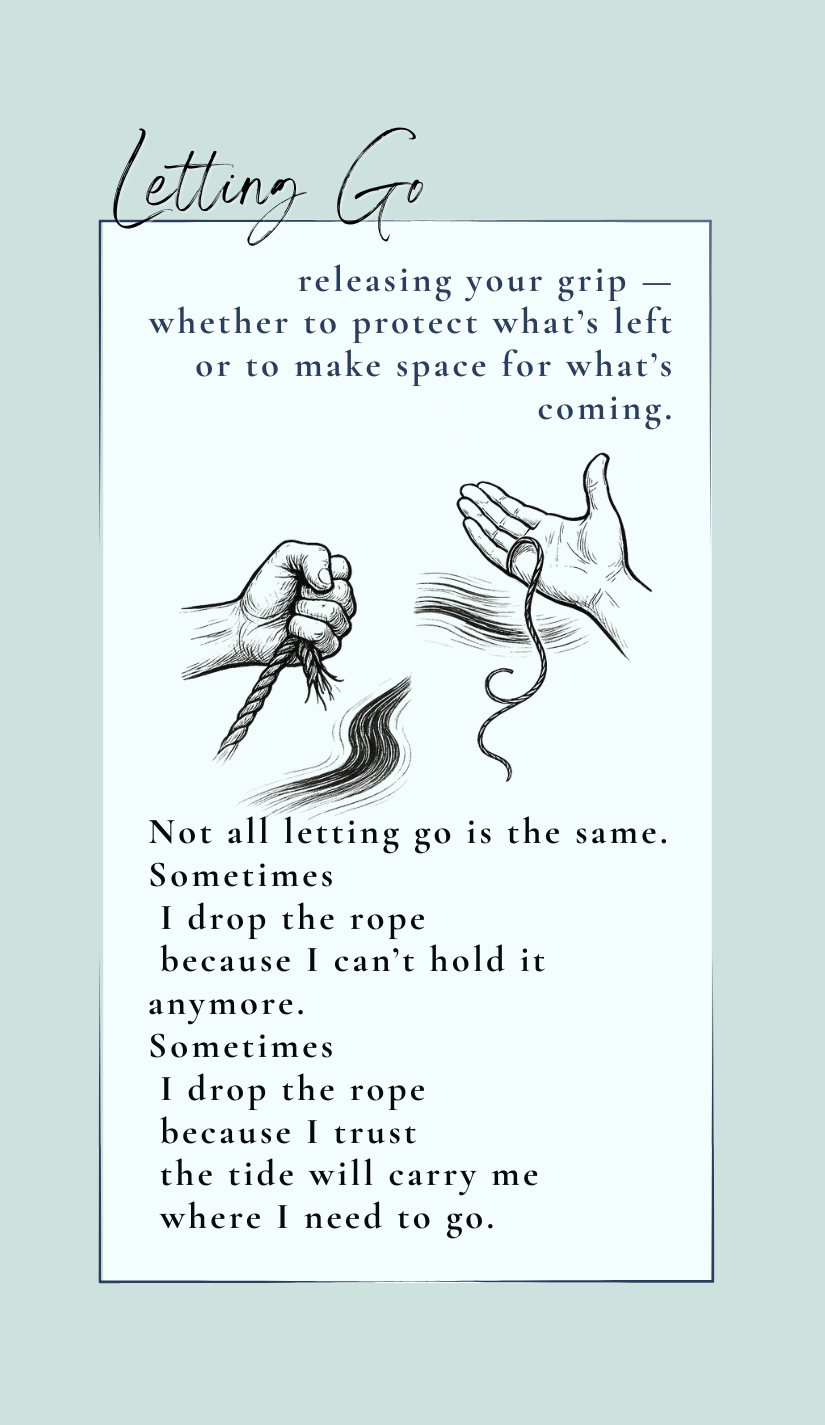The Difference Between Depletion and Trust
Sometimes your system holds two different meanings of letting go — one that says release everything because you have nothing left, another that says release control because you trust what's unfolding.
Collapse carries the wisdom of preservation, the intelligence of knowing when the system has reached its absolute limit and must shut down to survive. It says: Stop everything. Withdraw completely. Sometimes safety lives in total disconnection when there's nothing left to give.
Surrender holds the wisdom of receptivity, the intelligence of knowing that releasing control can create space for support, beauty, and unexpected gifts to enter. It says: Stop controlling. Stay open. Sometimes safety lives in trusting that good things can come without your effort.
Both responses involve letting go, but they come from completely different places. Collapse lets go from emptiness — a necessary protective shutdown. Surrender lets go from trust — a conscious choice to receive what life offers.
When they both show up, it can feel confusing because they look similar on the surface — both involve releasing and not-doing — but one feels like depletion while the other feels like faith.
This tension isn't about being depressed or spiritual. It's your system trying to distinguish between protective shutdown and conscious openness.
Gentle Reflection
What if the similarity between collapse and surrender isn't confusion, but your nervous system's sophisticated understanding that letting go can serve completely different purposes?
Collapse isn't about giving up — it's about honoring absolute limits. Surrender isn't about being passive — it's about actively trusting. Both responses involve release, but one preserves while the other receives.
Your system learned that sometimes letting go is an emergency measure to prevent total burnout, and sometimes letting go is a doorway that allows nourishment to enter your life.
The goal isn't to never collapse or never surrender, but to develop the awareness to recognize which kind of letting go serves you in each moment.
Journal Prompts
When do you notice the urge to shut down completely? What is your system trying to preserve or protect through withdrawal?
When do you feel the invitation to release control and trust? What might be trying to reach you if you opened to receive it?
What would nourishing rest look like — restoration that replenishes rather than just protecting?
Integration Practice
"Empty Cup, Full Cup"
Sit quietly and imagine yourself as a cup.
First, notice if you feel like an empty cup that needs to be protected from any more demands — honor this need for complete rest.
Now imagine yourself as a cup that's ready to receive — not empty from depletion, but open from trust.
Feel the difference between these two states in your body.
Practice saying: "I am empty and need protection" when that's true, and "I am open and ready to receive" when that feels possible.
Let yourself rest into whichever state is most honest right now.
Closing Thought
You are not broken when you need to collapse completely. You are preserving what remains.
You are not passive when you choose to surrender and trust. You are opening to possibilities.
The dance between protective shutdown and receptive flow is not a mental health issue — it's human rhythms.
Sometimes you need to close completely to restore. Sometimes you can open gently to receive. Both are forms of wisdom. Trust your system to know which kind of letting go serves you now.
